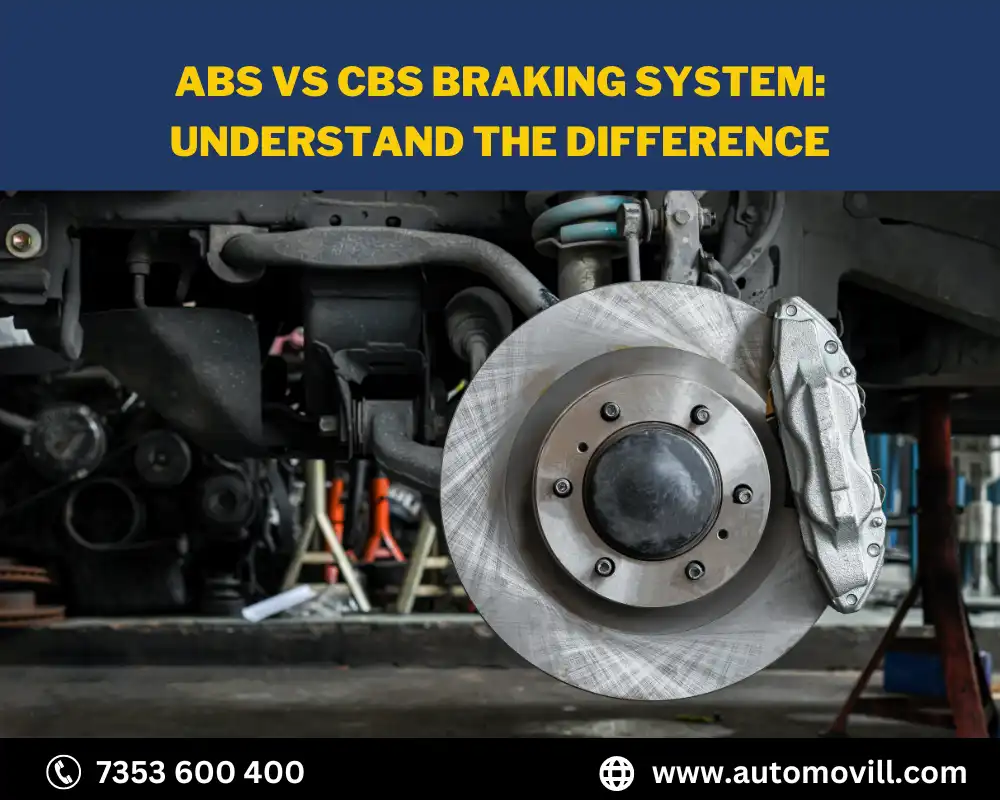
When it comes to road safety, the braking system of your car has to be top-notch. As automotive technology continues to evolve, two commonly used braking systems have gained popularity: Anti-lock Braking System (ABS) and Combined Braking System (CBS).
In this blog, we will explain the key differences between ABS and CBS, highlighting their functionalities, advantages, and why they are crucial for safe driving.
ABS (Anti-lock Braking System)
ABS is an advanced safety feature designed to prevent the wheels of a vehicle from locking up during sudden braking or in slippery conditions.
How it works:
- ABS sensors monitor the rotational speed of each wheel.
- If a wheel is about to lock up, the system modulates the brake pressure automatically to maintain traction.
- Rapidly pumping the brakes manually is unnecessary, as ABS does it automatically.
Advantages of ABS:
- Enhanced steering control: ABS helps the driver maintain steering control during emergency braking, reducing the risk of skidding or losing control of the vehicle.
- Shorter stopping distance: By preventing wheel lock-up, ABS allows the driver to brake hard while still maintaining traction, resulting in shorter stopping distances.
- Improved stability and maneuverability: The ability to steer while braking contributes to overall stability and maneuverability, even on slippery surfaces.
- Reduced tire wear: ABS minimizes tire skidding, thus reducing tire wear and improving longevity.
CBS (Combined Braking System)
CBS is a braking system that applies a proportional amount of brake force to both the front and rear wheels when the rider activates either the front brake lever or the rear brake pedal.
How it works:
- CBS uses a mechanical or hydraulic linkage between the front and rear brakes.
- When the rider applies the front brake lever, the system automatically applies some braking force to the rear wheel.
- Similarly, when the rider applies the rear brake pedal, the system distributes some braking force to the front wheel.
Advantages of CBS:
- Increased stability: CBS distributes braking force proportionally between the front and rear wheels, preventing the vehicle from nose-diving or rear-end lifting, leading to better stability during braking.
- Improved control: By applying braking force to both wheels simultaneously, CBS provides more controlled braking, reducing the chances of skidding or loss of control.
- Equalized braking power: CBS ensures that both wheels contribute to braking, regardless of whether the rider uses the front or rear brake, improving overall braking performance.
- Simplified braking technique: With CBS, riders do not need to apply both brakes simultaneously, as the system automatically distributes the brake force.
Importance of ABS and CBS
- Road safety enhancement: Both ABS and CBS significantly enhance road safety by mitigating the risks associated with sudden braking and slippery road conditions.
- Accident prevention: These braking systems reduce the chances of accidents caused by wheel lock-up, skidding, loss of control, and nose-diving.
- Greater control for riders: ABS and CBS provide riders with greater control and confidence during emergency braking, ensuring they can steer and maneuver the vehicle safely.
- Improved braking performance: By optimizing brake force distribution, ABS and CBS improve braking performance and reduce stopping distances.
- Regulatory standards: Many countries have made ABS mandatory for certain types of vehicles due to its proven effectiveness in preventing accidents. CBS is also gaining popularity and is being incorporated into various two-wheeler models to meet safety requirements.
Conclusion:
In the realm of vehicle safety, ABS and CBS have revolutionized braking systems, providing crucial benefits to drivers and riders alike.
While ABS prevents wheel lock-up and ensures steering control during emergency braking, CBS distributes brake force between the front and rear wheels, enhancing stability and control. These advanced braking systems have become imperative for road safety, reducing the risk of accidents, and providing an overall better driving experience.
As technology progresses, it is expected that ABS and CBS will continue to evolve, making our roads safer for everyone.
